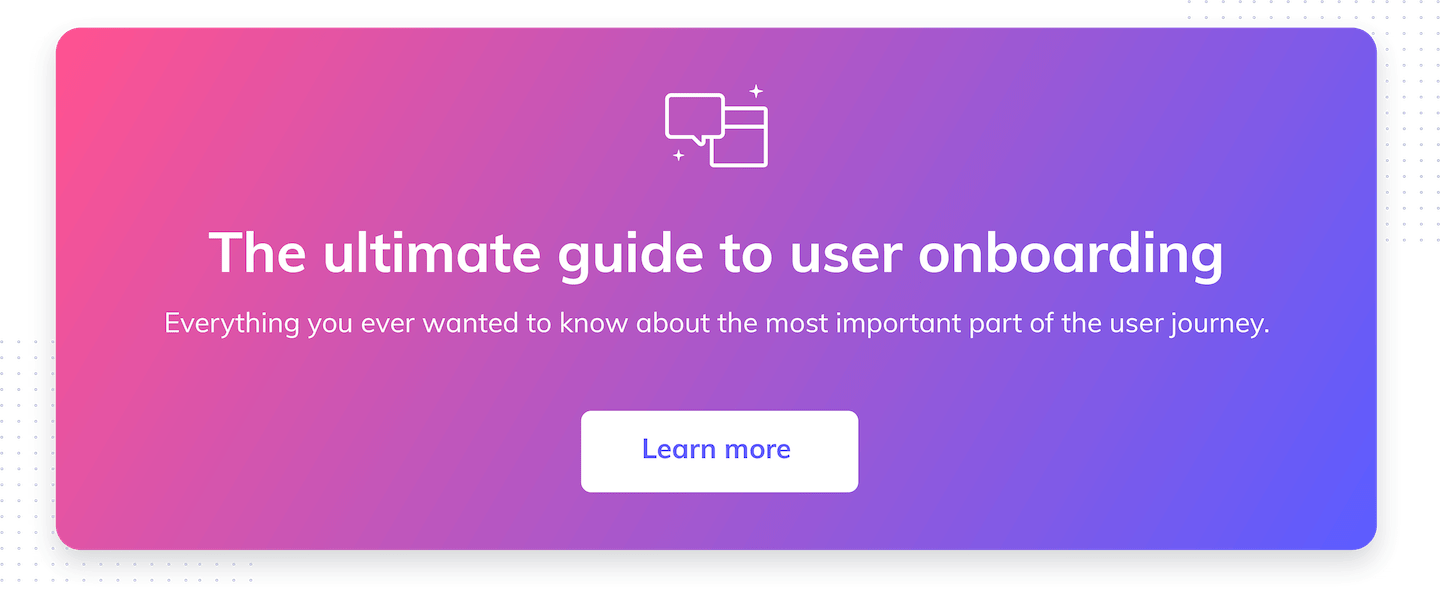Why user onboarding is the most important part of the customer journey

.png)

.png)
Let’s face it: User retention is a product owner’s biggest challenge. Even the best apps aren’t immune from churn. The reality is, you need to be both proactive and strategic about getting users hooked.
Take a look at the app user retention rate chart below. For many companies, this is the discouraging trend their retention rates follow:
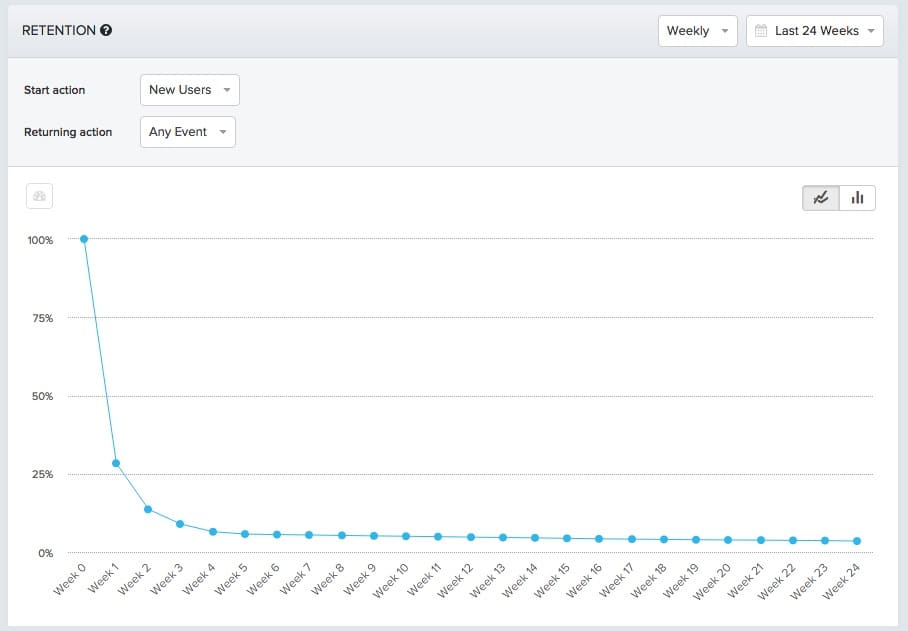
In this example, you’ve lost nearly 75% of your users within the first week, and by the end of the month, you’re down to 6% of your registered users. By the end of 3 months, only 4 out of 100 users are left.
It’s not a pretty sight. Unfortunately, that kind of retention curve is par for the course for mobile apps in just about every industry. As of this year, a whopping 25% of users abandon an app after just one use—up 4% from 2018 and tying the highest rate of the past 7 years:

So what’s a product manager to do? Where’s the opportunity in all this?
Take another look at that retention curve: In this scenario, your churn has flattened by week 10. From then on, you’re holding steady on retention, albeit at 4%. What this tells you is that your product does have some traction, and you’ve built real long-term value—even if only a very small set of people see it right now.
Now you have your target: Improve that 4% number. Get it up just a smidge to 5%, and you’ll increase revenue by a whopping 25%. Push it even higher and your business will start to take off.
But the best way to do it isn’t what you probably expect. To make the biggest impact, you’ll need to avoid the temptation to hone in on the user experience starting at Week 10 and make short-sighted product changes, building new features from scratch.
It may be surprising, but one of the biggest determinators of where your churn flattens out to in Week 10 of the retention rate chart is the first impression you make in Week 0, during user onboarding. That’s why it’s likely that the best, most effective use of your team’s time is to go all the way back to Week 0 and work on getting users off on the right foot.
It turns out that when you improve user onboarding by following best practices, you get massive leverage and the changes you make will provide lift throughout your entire retention curve.
Before we launch into how to achieve better user retention, let’s clearly define what retention looks like. HubSpot breaks retention down into 3 phases. At each step, HubSpot focuses on getting users to do one thing:
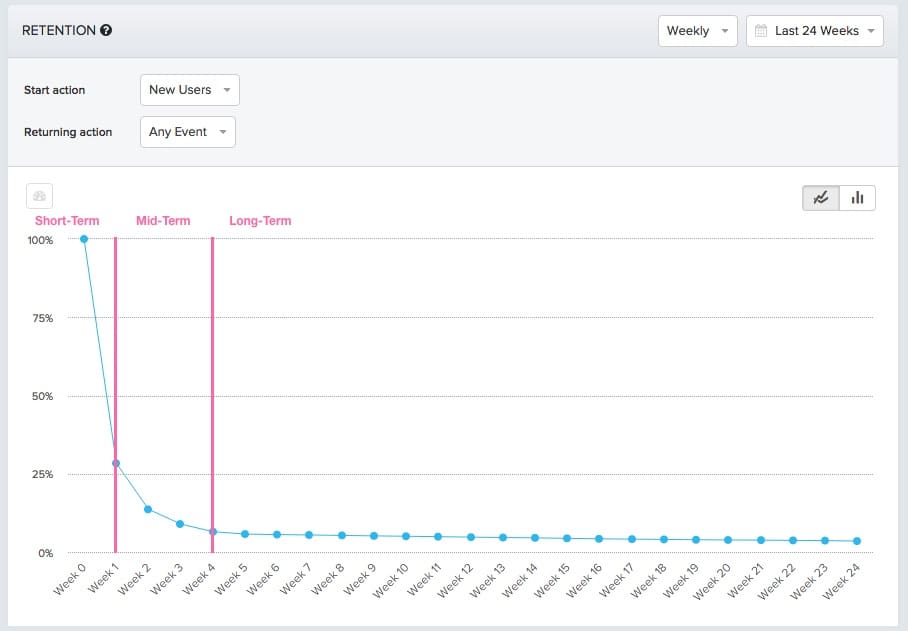
This breakdown helps you tackle the user retention problem in phases, but it’s important to recognize that each phase of retention isn’t independent—each phase of retention relies on users successfully doing that one thing in the phase before. So, one of the best ways to get more users to rely on the product as an indispensable tool is simply to get them using it more than once.
In addition, notice how the biggest drop-off in usage (nearly 75%) happens during the short-term retention period between Week 0 and Week 1. \. In contrast, you see a single percentage point drop between Week 3 and Week 4. There’s much more room for improvement early on, such that small changes in user onboarding will have a massive impact in that first week, and the weeks to follow.
The Product-Led Growth Flywheel is a framework for growing your business by creating product-led user experiences—starting with a positive user onboarding experience, the effects of which compound over time.
The goal of every product owner is (or should be!) to improve their onboarding experience to help users understand its value as efficiently and effectively as possible. Take a look at this mobile app onboarding experience from Slack:

Slack’s onboarding experience tells the user everything they need to know about their app in 4 quick screens. That brevity is important, since mobile users are notoriously impatient:
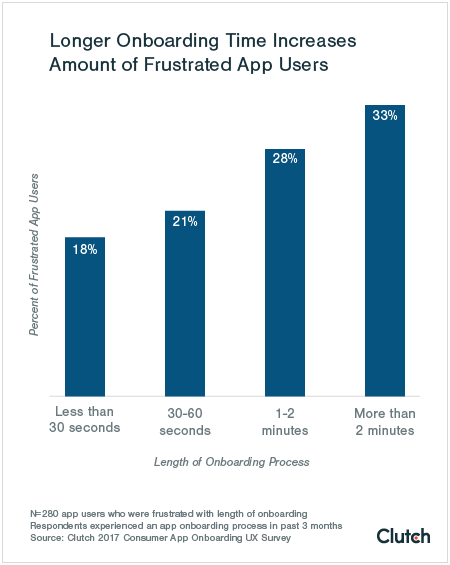
To put it simply, the length of your onboarding experience (especially for mobile) is as important as the content. You have a short window to make a good impression. So make sure you’re clear, concise, and don’t overlook the power of beautiful branding.
Even more proof that stellar user onboarding works comes from Dan Wolchonok. In his talk at Price Intelligently’s SaaSFest conference, Wolchonok—Head of Product and Analytics at Reforge (and formerly of HubSpot)—described how improvements to the user onboarding in HubSpot’s Sidekick product proportionally increased the number of users using the product at every week in the customer lifecycle.
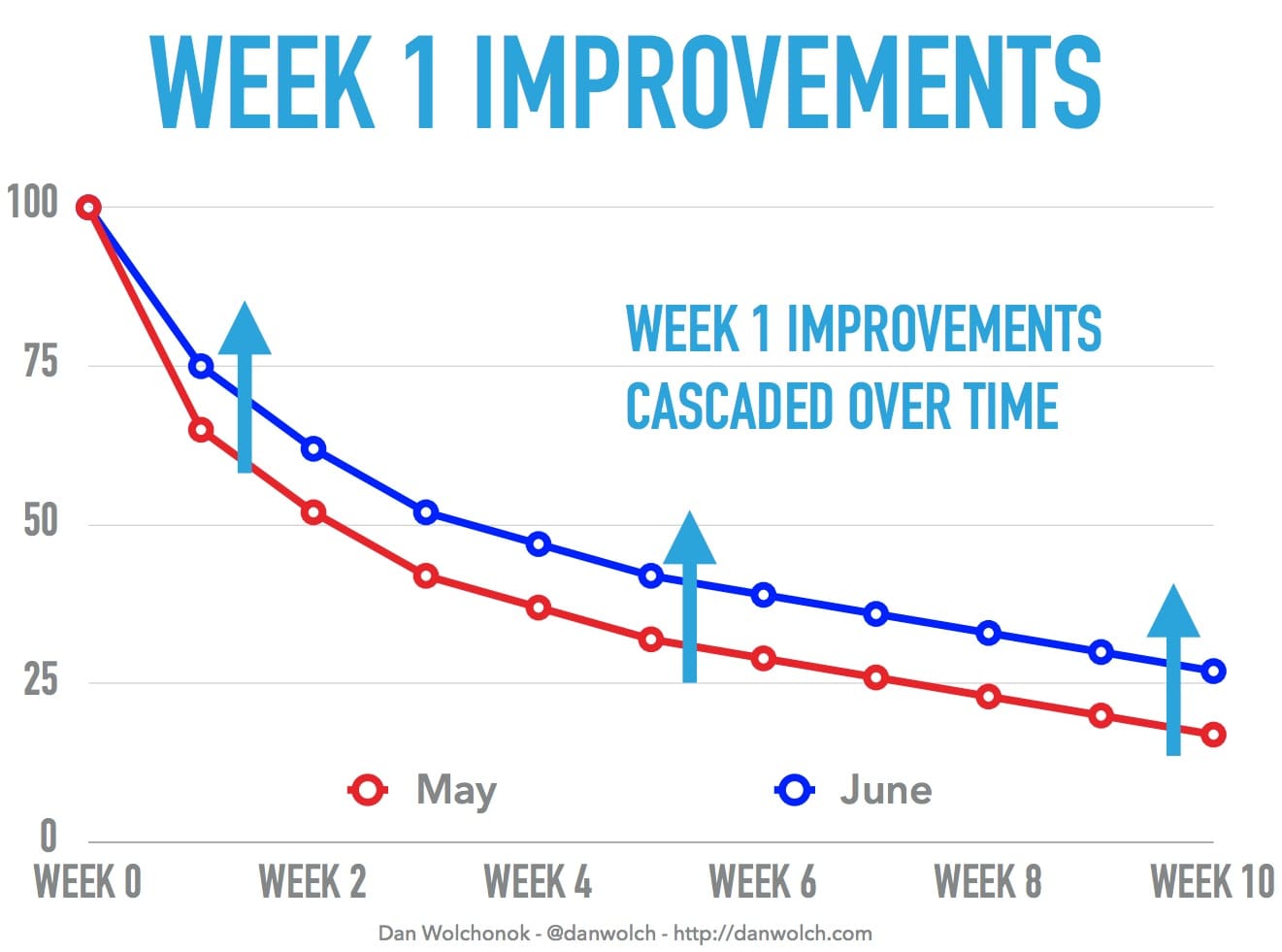
User onboarding improvements drove Week 1 retention up to 75% (from around 60%). And at Week 10, they were retaining 25% of users versus the 10 to15% they’d seen previously.
If we go back to our first example and introduce a 15% increase in Week 1 retention to the data (like that seen at HubSpot) and change nothing else, that 15% boost results in 50% more users retained at the 10-week mark.
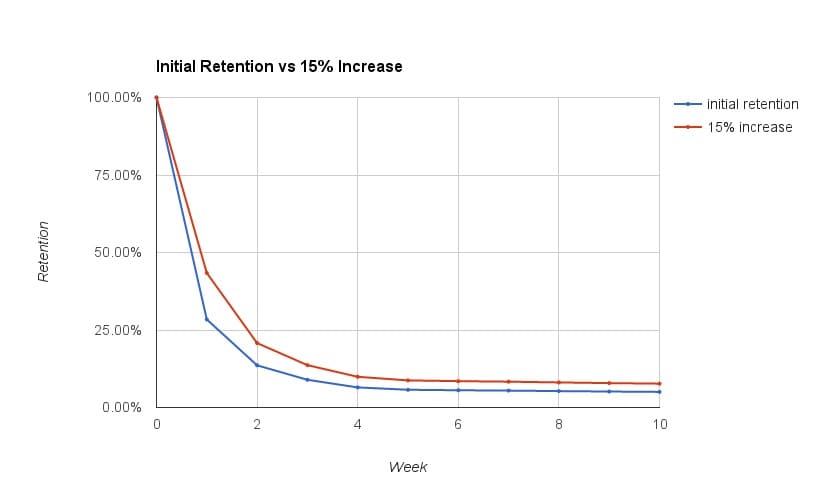
Awesome, right? It gets better. This small increase in Week 1 retention and the proportional increases it brings to your user baseline translates into significant gains in revenue throughout the entire period.
Assuming that user retention is proportional to revenue retention, if you started with 1,000 users in each cohort and charged each user $5 per week, then instead of making less than $1,500 in Week 1, you’ll now be making over $2,000. Each week after that, you are making 50% more revenue. This continues on and on and on, with your baseline of users bumped up adding more revenue week on week.
With retention plateauing at around 8% instead of 5%, you’re making over $100 more per week because of some simple changes made in Week 1. What’s more, you’ve been making more money throughout the entire period. If you were to sum up all the revenue available under the blue curve above you’ll have made $20k from these users within a year.
In other words, onboarding improvements that improve Week 1 retention result in a $28,000 revenue boost from the cohort that year. You see a 40% increase in revenue by making what users did in Week 1 just 15% better—2.6x what you put in.
Long-term retention is so strongly correlated to what happens during the onboarding period that you can often predict whether a customer will stay with you based on what actions they take or don’t take in their first week.
At Facebook, their growth team split users into 2 groups: those who became engaged users—using Facebook day after day—and those who didn’t. They discovered something surprising. Engaged users had added at minimum 7 friends within the first 10 days of signing up. That number became their activation metric.
Identifying that predictive metric was a very powerful driver in aligning everyone in the company around the goal of getting new users to add 7 friends as quickly as possible during onboarding. Ultimately, identifying that metric helped power the growth engine that took Facebook to 1 billion users and beyond.
The aha (or wow) moment all comes down to user’s understanding your product’s core value. If a customer can understand how your product is going to help them accomplish their goals, then they are far more likely to continue using the service for an extended period. If that core value isn’t directly obvious, then they’ll log out and never return.
That’s why you see such rapid dropoffs in retention in the short-term—people can’t find the value and churn out immediately. But get that core value delivered to users quickly, and that strong first impression sticks with them, carrying them through to the long-term retention phase that can last years.
This recognition of core value is called the aha moment or wow moment. In venture capitalist and prominent SaaS commentator David Skok’s words:
"[The wow or aha moment is the point] where your buyer suddenly sees the benefit they get from using your product, and says to themselves ‘Wow! This is great!’”
User onboarding is about getting to that moment as soon as possible. This makes for a better experience for your users, and more customers and increased revenue for you.
Ironically, it’s typically not obvious what your own app’s aha (or wow) moment is. At Facebook, it seems evident in retrospect, but the wow moment could’ve been 7 status updates in 10 days, 10 likes in 10 days, or any number of other interactions on Facebook.
For most apps, your aha moment is something that you discover by observing and understanding user behavior. It is not something that can you prescribe to your users. When building your app, you probably have some idea of the core value of your product—but how you see your product and how your customers see your product can be two very different things.
To uncover your app’s aha moment, do the following:
Running a regression and determining the correlation coefficient between user behaviors and retention sounds complicated, but it’s actually pretty straightforward with calculators available to do the hard work for you. In addition, Amplitude makes this process easy by allowing mobile developers to track in-app events and then look at the correlation between specific behaviors in their app and retention over time.
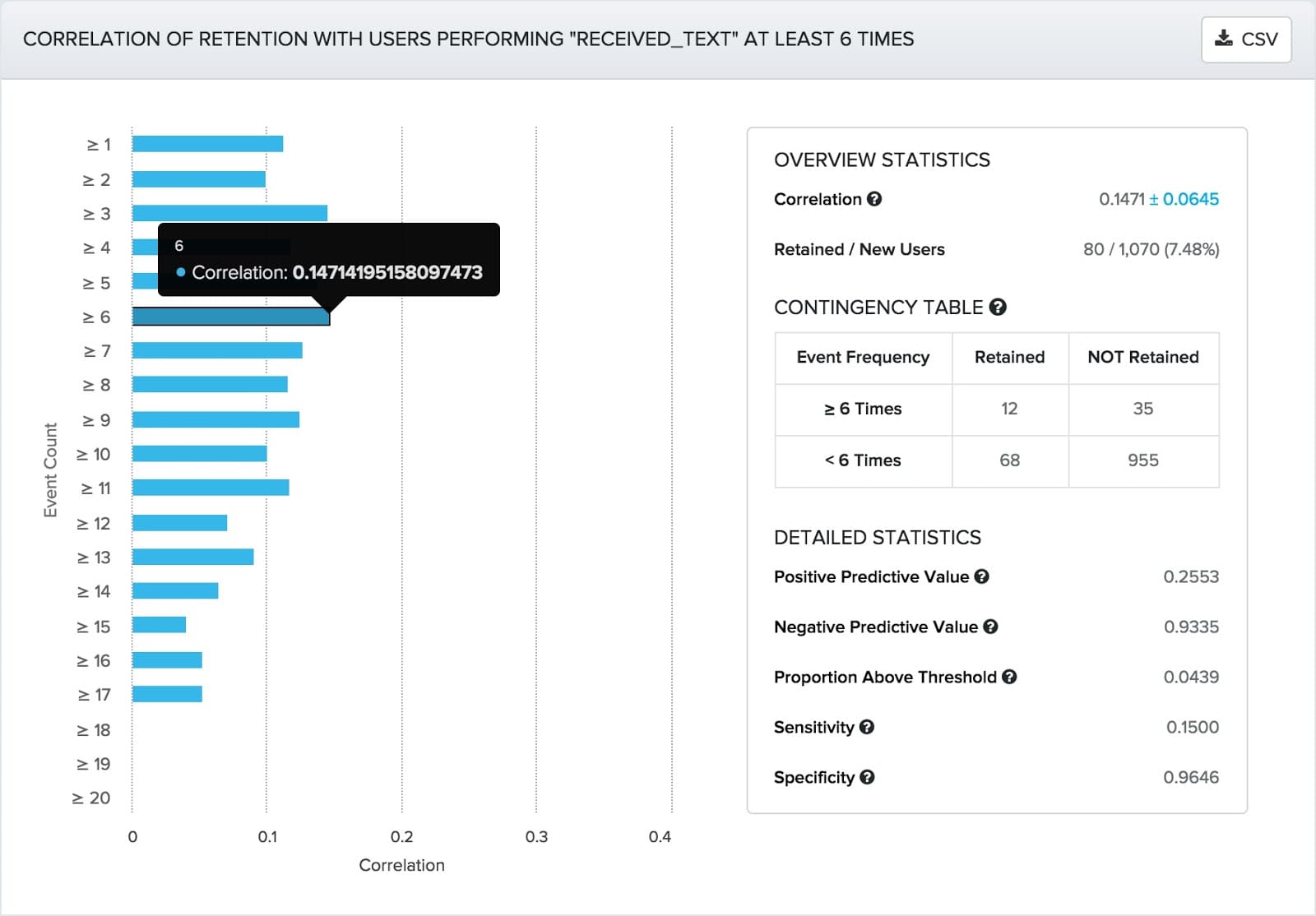
Suppose your app is a website uptime monitoring service like Pingdom. By running this analysis, we can see that receiving a text 6 or more times (the behavior) is positively correlated with long-term retention. It may seem like a small correlation at only +0.1471 (correlation runs from +1, perfectly correlated, to -1, perfectly negatively correlated) but any positive correlation means that this is part of the puzzle.
Correlation is a measure of how two metrics are related to each other. In this case, those are the number of texts received and the number of people retained. The blue +/- 0.0645 shows how confident you can be in your number. The closer this is to 0, the more likely your correlation calculation is on the money.
There are a few other numbers here that will help you identify your wow moment and help move people towards it. In particular, the Positive and Negative Predictive Values can help you assess whether this behavior is something to push people towards.
In this case receiving 6 texts has a PPV of 26% and an NPV of 93%. A PPV of 26% means that receiving 6 texts leads to the person being retained 1 in 4 times, which makes for a pretty solid foundation for building further retention. What’s more, an NPV of 93% means that people not exhibiting this behavior are almost definitely going to churn, lending further evidence to the need to get people receiving the texts.
Lastly, the Proportion Above Threshold value shows how many of your users overall are already exhibiting the behavior. A low number, such as the 4.3% here, indicates that there is still plenty of room to grow and you can relatively easily drive more people towards this moment.
Once you have an idea of what wow moments are, you can start experimenting with bringing them to your users attention during onboarding. This is absolutely critical, because correlation does not equal causation.
When you find that, for example, receiving 6 texts or more in the first 15 days is correlated with long-term retention, there are 2 possibilities:
If you see that results in an improvement to long-term retention, then you can say that receiving 6 or more texts actually causes people to stick around. On the other hand, emphasizing text messaging may obscure a different feature, such as setting up performance visualizations on your app uptime. In this case, your changes could actually cause long-term retention to decline.
By experimenting with your onboarding flow, you can work out where you need to drive your users early on. For chatbot and conversational marketing product Drift, retention lies in getting users to setup that first bot so that they can see the results it drives. They created an easy setup process to get new users over the hurdle:

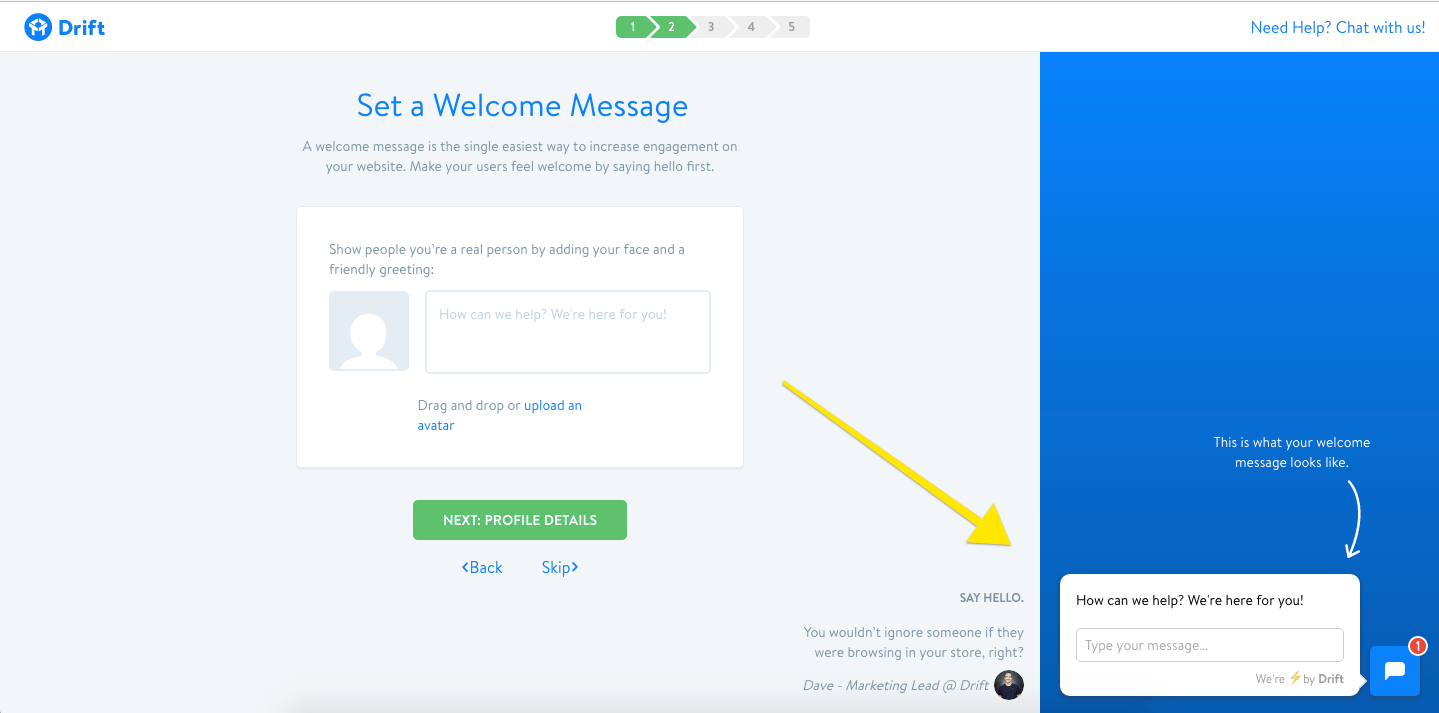
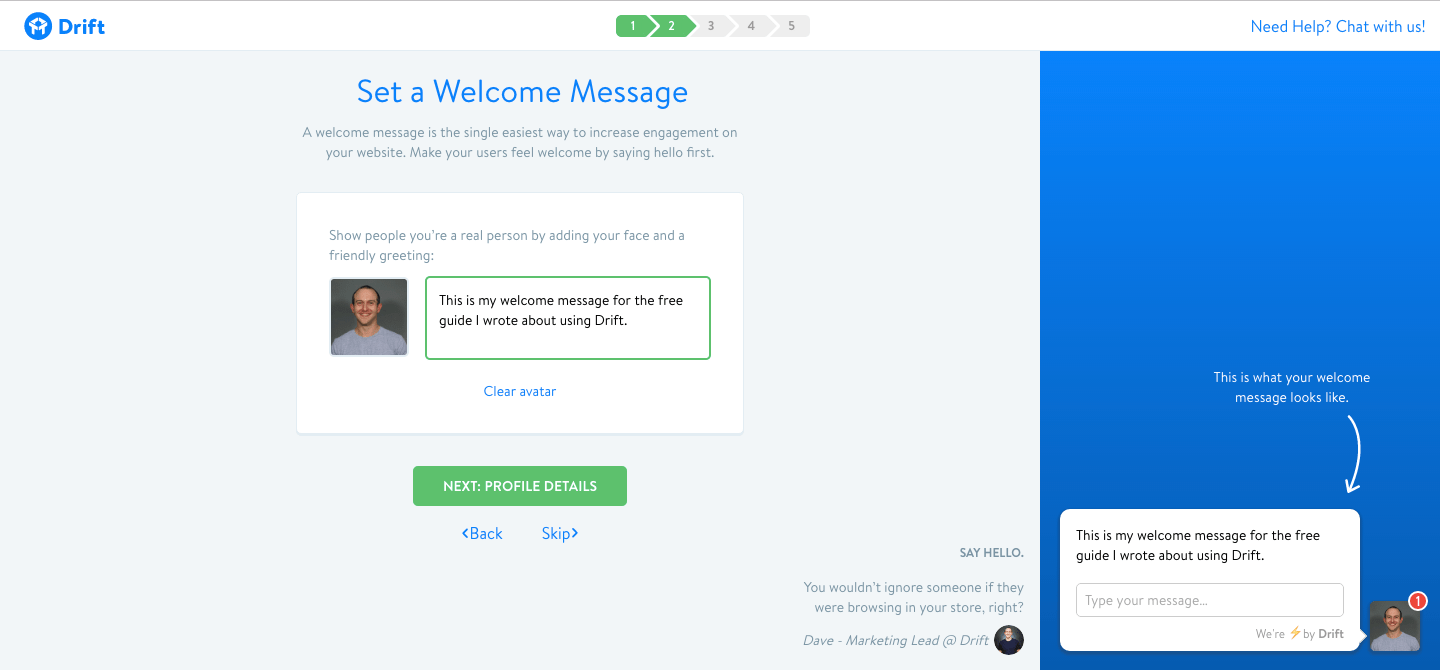
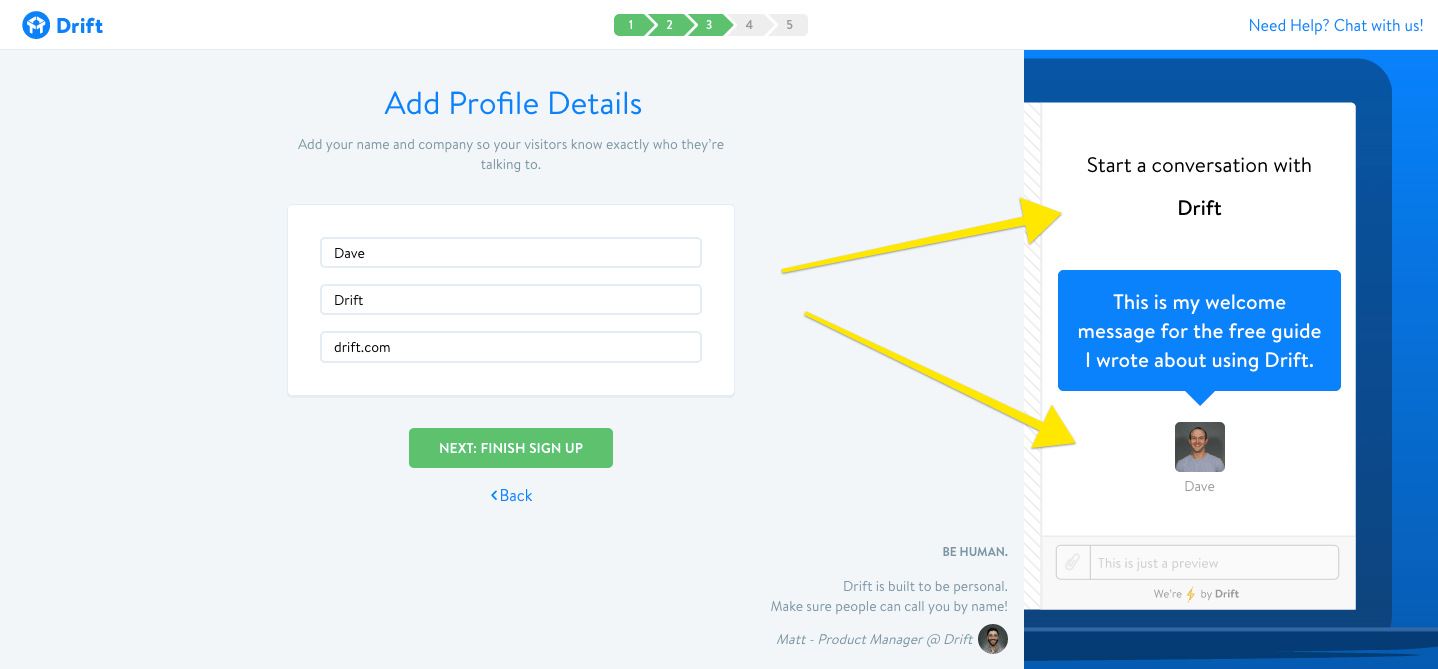
So many users get dropped into a dashboard and wonder what they’re supposed to do next—his is where many users get intimidated and leave without performing a single action. Drift solved this problem by walking new users through setting up their chatbot.
Drift’s onboarding experience ends with a screen asking the user if they plan to install the code themselves or send it to a teammate—having multiple options at this step a great way to help users over the installation barrier:
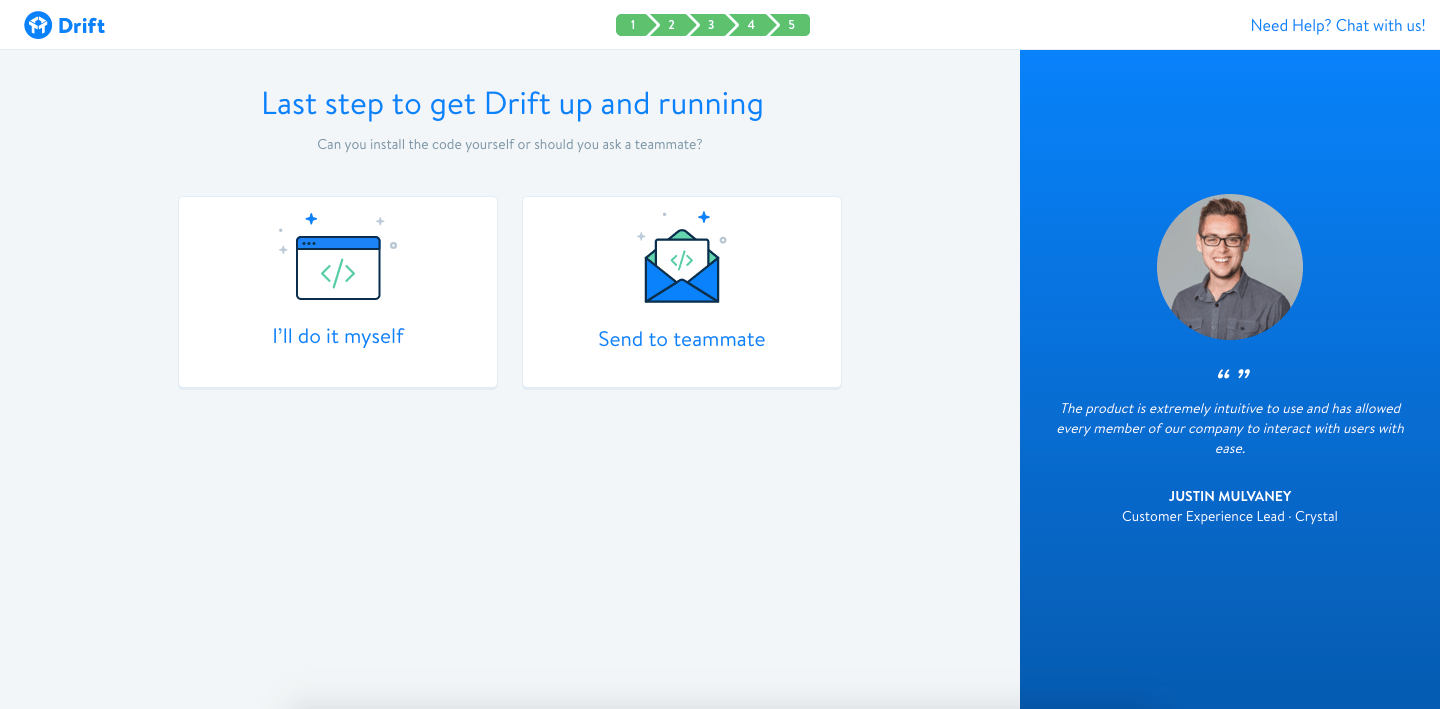
There’s a good chance Drift took a look at their regression analysis and realized installing the code positively correlated with retention, causing them to highlight this as a key part of the onboarding experience.
This is where spending the time looking at the data and running the analysis pays off. Bad onboarding will flood those first screens with multiple cues, pointing out all the cool features to new users. They won’t have a clue what the important ones actually are.
By drilling down to these core values via retention analysis, you can find the one that really drives retention and focus your efforts on that. Then you can track these users and compare their long-term retention versus other users who haven’t had viewing the visualizations emphasized.
When people first sign up for your product, they’ll either get it or they won’t. They’ll either understand the core value and say “Wow!” or shrug, drop your app in the trash bin, and forget about it forever. The users that say “Wow!” are the ones that will still be using your product weeks, months, and years later. They’re the ones who will spread the word with friends and colleagues.
Getting users to that aha (or wow) moment now is critical to long term retention and revenue and takes a well thought out user strategy that starts with onboarding and continues through the user journey.
That’s why user onboarding is so crucial, and can have such an outsized snowball effect on growth—it allows you to unlock the inherent value of your product, and make it click for more users. Get the first few moments of your product right and your customers will stand by you, for weeks, months, and even years.
If you’re looking for insights, strategies, and inspiration from industry leaders, be sure to check out the Product-Led Growth Collective.
